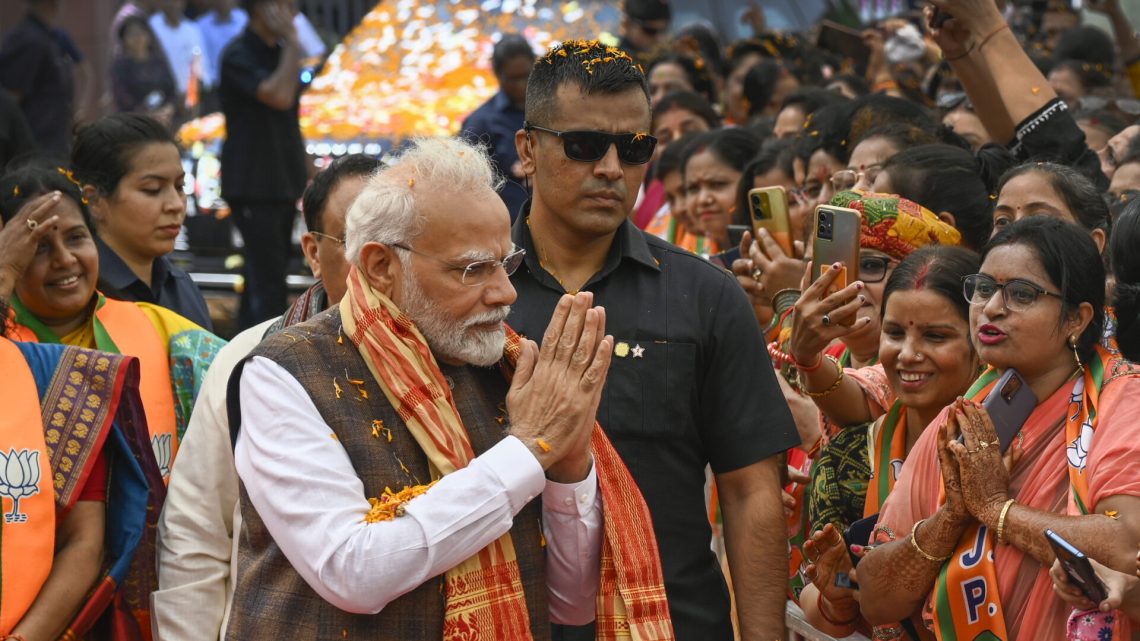
Hindu Nationalism and the New Jim Crow
February 21, 2024The Journal of Democracy (established in 1900) is an influential international forum for scholarly analysis and competing democratic viewpoints. It is affiliated with Johns Hopkins University, USA. The Journal monitors and analyzes democratic regimes and movements around the world. It has published a research study (18 pages) captioned “Hindu Nationalism and the New Jim Crow,” authored by Ashutosh Varshney, a professor at Brown University of the United States.
The study identifies that “if Jim Crow was about the severe marginalization of black Americans on the ground of their race, then Hindu nationalism under Modi’s Bharatiya Janata Party (BJP) is about the attempted marginalization of a minority, namely Muslim Indians, on the ground of their religion.”
The executive summary of the article is as follows:
Historical Parallels: The study identifies parallels between the marginalization of black Americans under Jim Crow and the attempts to marginalize Muslims in India under Hindu nationalism. Examples include legislative discrimination, extralegal violence, and undermining constitutional guarantees.
Religious Marginalization: Hindu nationalism, under Narendra Modi, is portrayed as a form of marginalization based on religion, with specific examples such as the changes in Kashmir’s autonomy and the Citizenship Amendment Act (CAA) targeting Muslims.
Diminished Citizenship: Both Jim Crow and Hindu nationalism aim to diminish the equal citizenship of minorities. Specific examples include the stripping of Kashmir’s special autonomy, reducing it to a “union territory,” and the introduction of the CAA, which opens a “fast track” to citizenship for non-Muslims.
Exclusionary Methods: Similar methods of exclusion are identified, including discriminatory laws, segregation, and state-supported violence, are identified. Examples include the CAA, which specifies only Muslim-majority countries for religious persecution, and the proposal for a National Registry of Citizens, disproportionately affecting Muslims.
Historical Context: The text delves into the historical context, emphasizing the attempt to marginalize a religious minority based on religion. Specific examples include the BJP’s narrative portraying Muslims as historical invaders and changing names to remove Muslim influences in India.
Relegation, Not Elimination: Both Jim Crow and Hindu nationalists seek relegation to second-class citizenship. Examples include anti-“love jihad” ordinances that prevent interfaith marriages, portray Muslim men as a threat, and the demolition of Muslim properties in BJP-run states.
Early Phases of the Hindu-Nationalist Project: The Hindu-Nationalist Project is described as being in its early stages, with examples such as the BJP’s electoral victories in 2019 leading to anti-Muslim moves like the changes in Kashmir’s status and the CAA.
Ideological Roots: Both Jim Crow and Hindu nationalism have exclusionary ideologies grounded in racial hierarchy or a religiously defined national community. Examples include justifying violence to prevent beef consumption and opposing conversions to Islam or interfaith marriages.
National Loyalty and Historical Reasoning: The understanding of national loyalty is explored, with examples like the BJP’s assertion that only Hindus can be true Indians and historical reasoning, including the idea of “thousand years of slavery.”
Economic and Social Dimensions: Exclusionary ideologies have both economic and social dimensions. Examples include the desire to maintain cheap labor, opposition to social equality, and fears of political power among marginalized communities.
Potential for Change: The study suggests that the Hindu-nationalist project is still in its early phases, providing an opportunity for voters to influence events. There is a need to understand the looming threat and take measures by the international community and Indian voters to shape the future political direction and prevent the institutionalization of a Jim Crow-style order.

